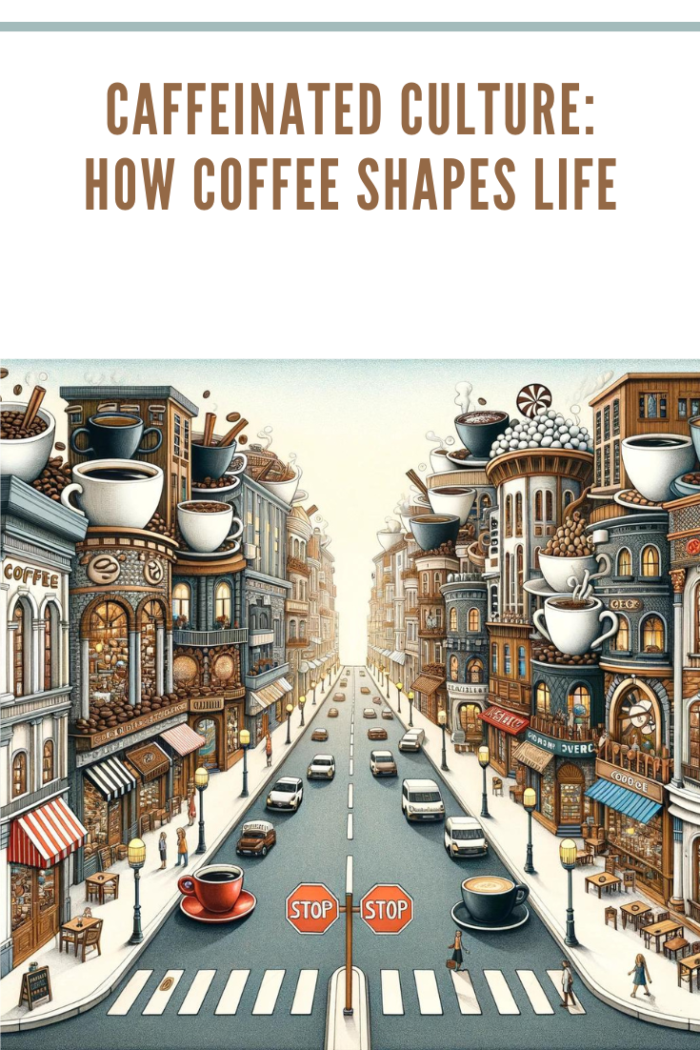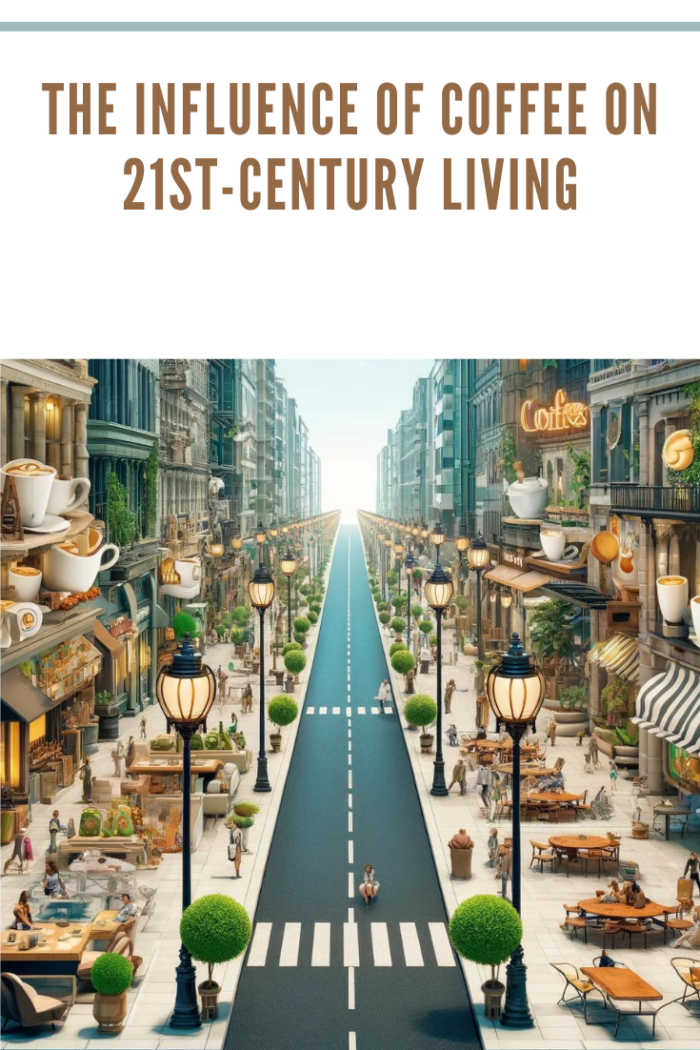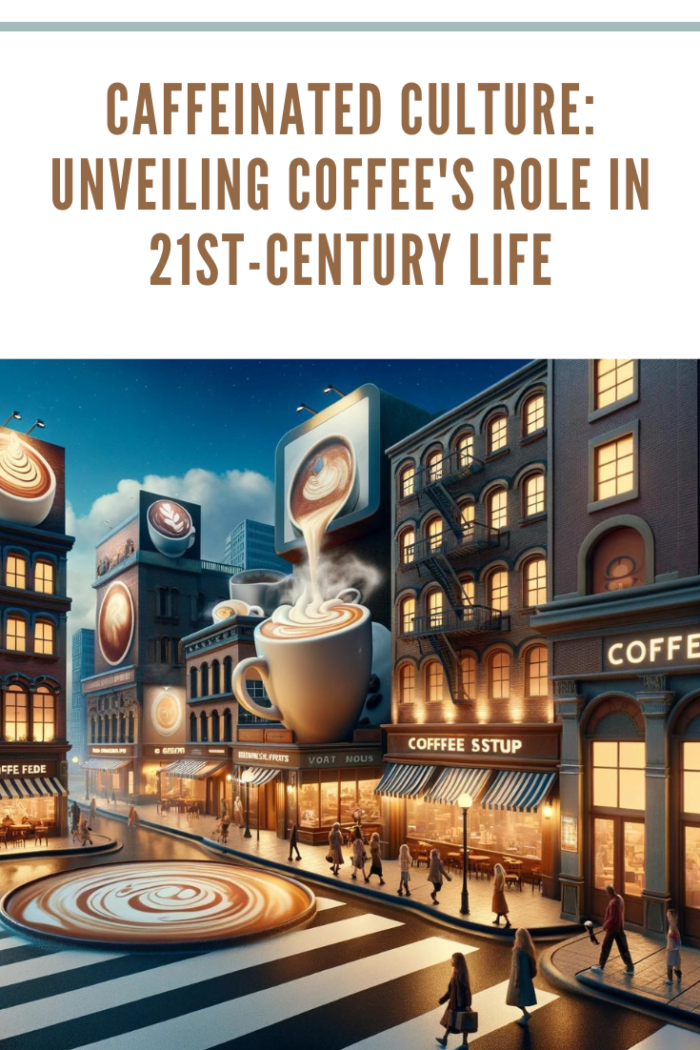We live in a caffeinated culture; in this post, we’ll discuss how coffee shapes life in the 21st century.
“Coffee is far more than a beverage. It is an invitation to life, disguised as a cup of warm liquid. It’s a trumpet wake-up call or a gentle rousing hand on your shoulder … Coffee is an experience, an offer, a rite of passage, a good excuse to get together.” ― Nichole Johnson.

Caffeinated Culture: How Coffee Shapes 21st Century Life
Coffee is a significant part of American culture. From a priceless morning commodity to a much-needed productivity-boosting drink, Coffee has slowly turned into a cultural obsession in the United States.
Today, there’s no town without a Starbucks or a ride on the morning commute without seeing a person drinking frappes. The Coffee we know and love has become an indispensable accessory in our lives.

The Overpriced Modern Coffee
With the rise of coffee drinkers and eco-conscious consumers, many aficionados are saving money and the planet by having baristas provide them with their fix in personal, environmentally friendly reusable coffee cups. Despite this, coffee prices remain on a steady upward trajectory.
But how is Coffee priced? Just like wine, prices vary depending on quality. Where it’s grown, its texture, and the production process all play a part in the final cost of the life-giving elixir. Merchants also blend imported coffees with locally produced beans to create new aromas and flavors. Did you know there are hundreds of ways to make Coffee now? Coffee beans are traditionally harvested on farms, dried, and roasted. Now there’s a lot more to the process (java aficionados say it’s art). The most expensive coffee (at $160 per pound) is made using cat poop. Ewww.

The Office Brew: The Role of Coffee in the Workplace
When producers began marketing Coffee to modern workers, it became more accessible, stylish, and personal. There was free instant Coffee or espresso machines in every office, personalized coffee designer cups for the coffee socialites. Coffee became part of the corporate culture. The Caffeine Culture started to transform coffee houses and cafes to support the burgeoning roasted revolution; now, every cafe you see supports Free Wi-Fi and serves gourmet food. What used to be a place for meeting friends and enjoying cappuccinos has become a hub for people to work and collaborate.
Caffeinated workers believe they feel more energized, alert, and focused while slogging through the daily grind. When discussing a work matter, the group does it over Coffee. When someone needs to pull an all-nighter, grab a jug of black gold. It has helped immensely improve people’s concentration, but it’s also pushed us to work more hours in a day.
Caffeine, The Most Popular Drug?
In defense of a good cup of Coffee, Caffeine has been the drug of choice for many people in all parts of the globe, albeit a mild, socially acceptable one. Some even claim they cannot start their day until they’ve had a cup or two. Is this merely a habit, or is it bordering on addiction?
Caffeine is not only found in coffee; other drinks such as tea, soda, chocolate, and even some nuts contain caffeine. Although caffeine is safe in small doses and has beneficial effects on the body (especially for our central nervous system), there are risks associated with consuming more than three or four cups a day. According to NCI, drinking two to four cups of coffee a day can make you irritable, anxious, and restless. It can also cause a headache, abnormal heartbeats, and anxiety.
With the value of Coffee ever-increasing each year, will it remain our favorite drink? If current trends are anything to go by, there’s little sign of slowing!
